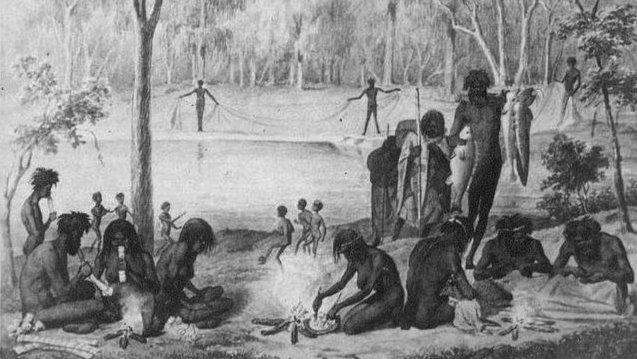The Australian Football League (AFL) has long stuck to their history, which essentially denies influence from .
However an anthropologist from Monash University, Professor Jenny Hocking, has recently found transcripts confirming the existence of the Indigenous ball game firmly in the Western district of Victoria - where the founder of Australian rules, Tom Wills, grew up.
Wills was the son of landholder Horatio Wills, and he was the district's only white child in the 1830s and 40s. Wills grew up playing with the Aboriginal children in the district; he spoke local language and participated in local ceremonies. As a teenager, he travelled to England to study at a rugby school, before returning to Australia and designing Australian rules football as a modified version of rugby, for Australian conditions.
As a teenager, he travelled to England to study at a rugby school, before returning to Australia and designing Australian rules football as a modified version of rugby, for Australian conditions.

Family life for First Nations People in Victoria, 1857. Source: SBS Staff.
The adaption of the game that Wills created did away with ground-level scrums, and instead focussed on keeping the ball in the air with rewards to players who caught the ball in the air.
This had a noticeable resemblance to the game that Indigenous peoples would play, which also focussed on the two teams keeping the ball in the air, and celebrating players who caught - or 'marked' - the ball mid-air. Some tribes even called the mid-air catch of the ball a 'mumark'.
The transcipts that Hocking found in her study included one with Mukjarrawaint man Johnny Connolly, who speaks of playing the game in the Grampians in the 30s and 40s: "We've later found connections between Johnny Connolly and the area in which Tom Wills actually lived. He [Johnny] worked on some of the stations in that area, including Ledcourt, which in the very early period was occupied by Tom Wills' father. The most important thing is it situates the game in its local version in the Grampians region at the same time as Tom Wills. There's now no doubt about that."
The most important thing is it situates the game in its local version in the Grampians region at the same time as Tom Wills. There's now no doubt about that.
While the connection between Australian rules football and Margrook may be well-known to First Nations people, the transcripts found by Professor Hocking are significant because a number of historians in the past have claimed that there was no proof Marngrook was played in the Grampians at the same time that Tom Wills was there to be influenced by it. Now, this proof has been found.
The AFL has historically denied any Aboriginal influence on the origins of the game. One AFL historian, Gillian Hibbins said in AFL's 150th anniversary book, "There is no mention of Aboriginal football by Wills in letters or in the two cricket guides he edited. On the contrary, there is much evidence to show that Wills, in fact, favoured Rugby School, as set out in the preceding text."
However, in 2008, writer Jim Poulter said to that it wasn't surprising that Wills didn't publicly state the Indigenous background for his adaption, because racism at the time would have caused people to disregard the game: "If Tom Wills had said, 'Hey, we should have a game of our own, more like the football that black fellas play', it would have killed it stone dead before it was even born."
An AFL spokesperson told the that Hocking's study and the transcripts have not been viewed by authoritative bodies at the AFL, and so a comment would not be made on it. "The debate is really one between historians as to what Wills was exposed to," he said. "Ultimately any view on our game's history is really a matter for the AFL Commission through the Hall of Fame."
There have been further calls for text-based evidence to historically prove Marngrook's influence in Australian rules football, but Professor Hocking says that this is "impossible" to produce, because Aboriginal culture was rarely written down - it was noted and passed down via dance, stories and art.
Main Image: 'Marngrook – My Father’s Country' (2011). Oil paint on canvas 152 x 90 cm by .
Tune into NITV's Australian Rules Football program, tonight at 7.30pm on NITV Ch. 34




